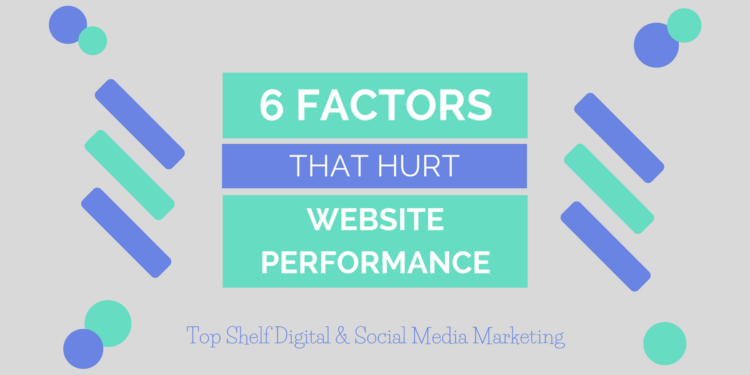
Website development is among the more technical aspects of digital marketing. One of the biggest fears associated with web development is spending valuable resources launching a shiny new website that underperforms. Sometimes outside factors impact goals, but often the barriers to success are borne from failures in the web development process. Here are six website development factors that can mean the difference between a homerun and a strikeout.
6 Website Development Factors that Hurt Performance
Responsive, Mobile-Friendly Design
There’s nothing more disheartening than launching a new website and then finding out that it’s not responsive. Responsive websites automatically adjust to accommodate tablets and smartphones. Typically this involves formatting the structure of pages and menus as well as accounting for the lack of a mouse. Over the last several Google algorithm updates, responsive design has become more and more critical to page ranking. If your site isn’t mobile-friendly, it’s likely Google is penalizing your site in it’s results thus limiting your website traffic.
Poor Website Content
Ultimately, your website content is what attracts visitors to your website. The quality of your website traffic and sales leads is a reflection of the quality of your content. Before you start writing, research potential Key Term Phrases (KTPs) and identify the ones you want to target. Then build your content strategy around them. Don’t forget to include KTPs in the backend of your site as well. A few places to keep in mind are your title tags, alt tags, meta data, etc. If copywriting isn’t your strength, that’s okay – but outsource it to a professional. There’s no excuse for poor content and if you screw it up you suffer poor organic search traffic.
Publish New Content Regularly
The biggest fallacy about launching a new website is that the day you go live is the day the project is completed. Websites are living, breathing digital versions of your brand and they should be updated regularly. Search engines regularly crawl websites to catalog information which factors into SERP rankings. Sites that regularly have new content are crawled more frequently and often rewarded with improved page rank. This is one of the reasons we highly recommend our clients start and maintain a regular blogging strategy.
Slow Page Speed
Another aspect that can adversely affect your website performance is page speed. A number of things can affect site speed – hosting environment, hi-resolution graphics that haven’t been compressed, etc. Slow site speeds and impatient website visitors result in people clicking back to the Search Engine Results Pages (SERPs). Not only does this mean you’ve lost that potential customer, it registers as a bounce. A high bounce rate signals to search engines that users come to your website, but aren’t satisfied with the information provided. This tells ranking algorithms to lower your site in the SERPs because it’s a poor match for those KTPs.
Chaotic Website Structure
A chaotic site structure puts your website at a disadvantage in two ways – both of which result in lower page ranking. First, web crawlers comb through the content on your website to verify you’re providing useful information that your audience will find beneficial. If they can’t make sense of your site, they assume your visitors won’t be able to either. Second, and possibly worse, disorganized websites are difficult for users to navigate. With so much content available at their fingertips, users will likely abandon your site and use one with content that’s easier to consume. When visitors spend little time on site and pages have a high bounce rate it negatively affects page rank.
Lacking a Sales Funnel
This one goes hand-in-hand with having poor website content and structure, but it deserves it’s own spot on this list. It’s possible that your content and structure are fine, they just aren’t moving website visitors through your sales cycle. Do you have a defined path to purchase? Do your pages include a strong call-to-action? Have you designated landing pages? Is your homepage easy to navigate and comprehend? These details help take your website from an informational resource to a conversion tool.
Final Thoughts
We’ve said it before and we’ll say it again, launching a website is not like field of dreams: if you build it they won’t necessarily come. There is significant behind-the-scenes work that goes into strategic website development. Failure to execute any one of several critical tasks almost always negatively impacts overall site performance. One of the biggest things you can do to set yourself up for success is to work with a reputable, results-proven website development team. Not are professionals up-to-date on the latest trends and best practices, they can help you avoid search engine penalties.
To see if your needs align with our skills; tell us a little about your brand.
